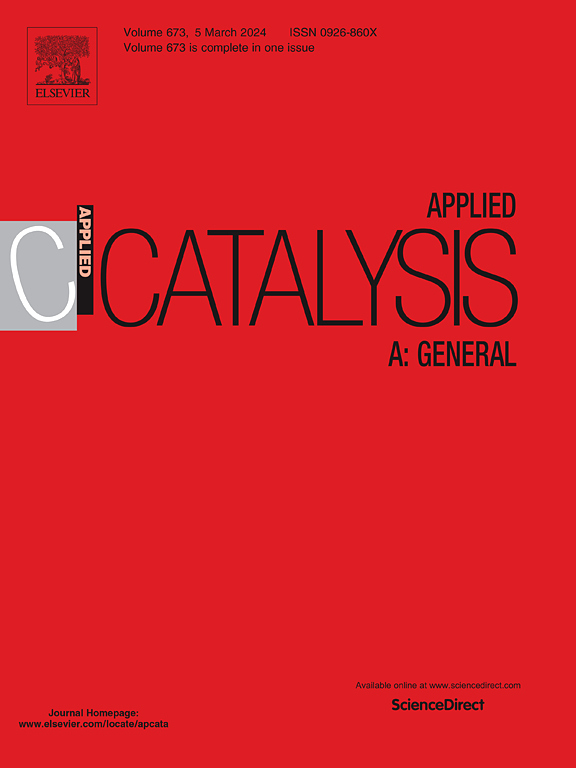Highly-efficient ethylene tetramerization chromium(III) catalysts based on N-substituted diphosphinoamine (PNP) ligands
IF 4.7
2区 化学
Q2 CHEMISTRY, PHYSICAL
引用次数: 0
Abstract
The Cr(III) precatalysts based on novel N-substituted bis(diphenylphosphine)amine ligands (PNP-type L1-L8) have been confirmed to be successfully synthesized and used to test ethylene tri-/tetramerization properties. Precatalyst 1 with a sec-butyl moiety exhibites remarkable activity of 2257 kg∙g−1∙h−1 with 61.3 % of 1-C8=. Compared with precatalyst 1, precatalyst 2, with a larger steric hindrance of a sec-butylphenyl moiety at a N-atom, leading to a significant decrease in catalytic activity to 339 kg∙g−1∙h−1. Nevertheless, the selectivity for 1-C8= increases to 67.9 %. It seems that increasing the spatial volume of the N-alkyl substituents make it more selective for 1-C8= and lower catalytic activity. Single-crystal analysis shows that complexes 9 and 10 make from ligands 1 and 2 both adopt bidentate (k2-P, P) coordination mode. Simultaneously, the theoretical calculations also suggest that, for precatalyst 1, Path 1 toward tetramerization is thermodynamically more favorable than the other two pathways.
求助全文
约1分钟内获得全文
求助全文
来源期刊

Applied Catalysis A: General
化学-环境科学
CiteScore
9.00
自引率
5.50%
发文量
415
审稿时长
24 days
期刊介绍:
Applied Catalysis A: General publishes original papers on all aspects of catalysis of basic and practical interest to chemical scientists in both industrial and academic fields, with an emphasis onnew understanding of catalysts and catalytic reactions, new catalytic materials, new techniques, and new processes, especially those that have potential practical implications.
Papers that report results of a thorough study or optimization of systems or processes that are well understood, widely studied, or minor variations of known ones are discouraged. Authors should include statements in a separate section "Justification for Publication" of how the manuscript fits the scope of the journal in the cover letter to the editors. Submissions without such justification will be rejected without review.
 求助内容:
求助内容: 应助结果提醒方式:
应助结果提醒方式:


